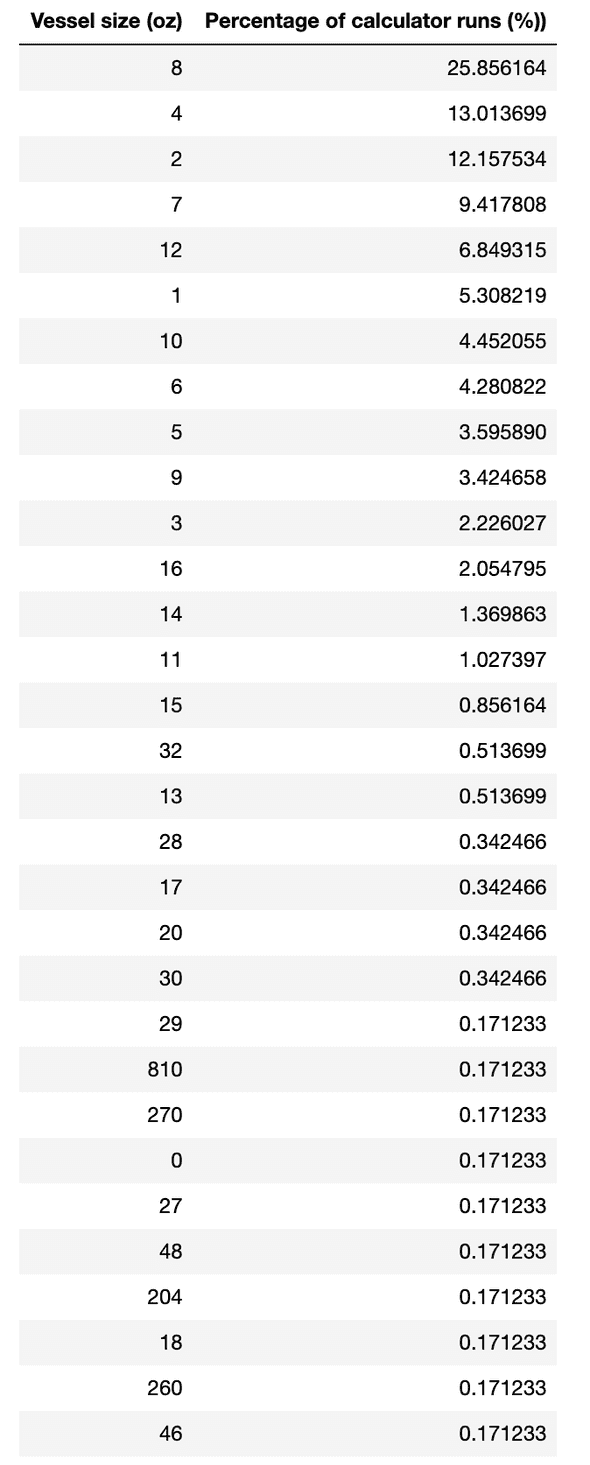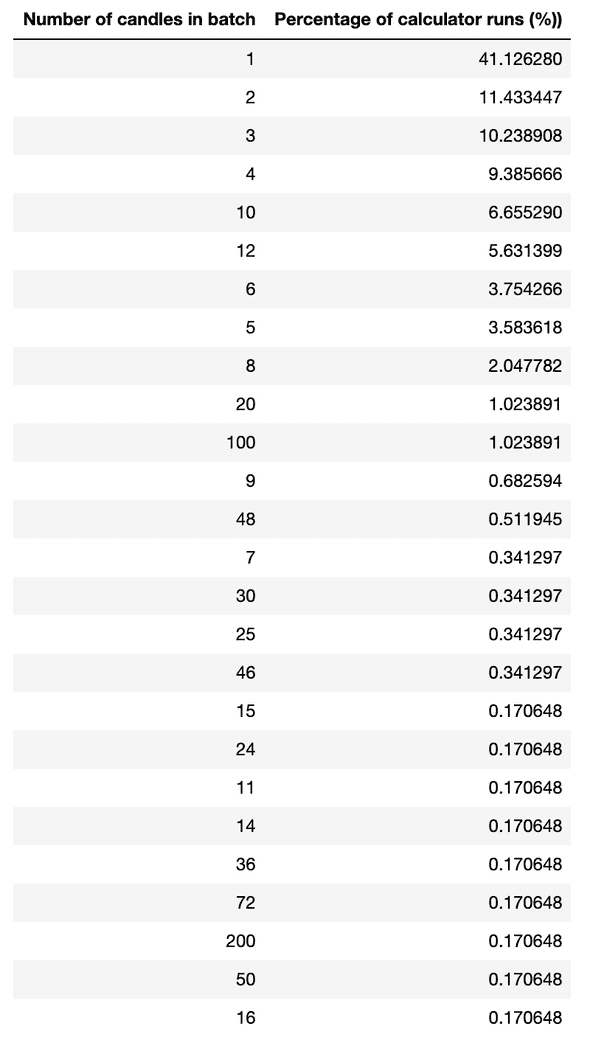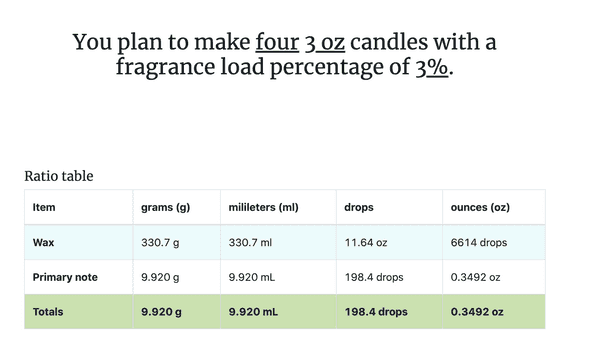Fragrance tool numbers
July 31, 2020 | 4 minute read
For those who don’t know, I’ve built a fragrance calculator tool to help calculate wax and fragrance oil quantities given some inputs.
It doesn’t get a ton of traffic, but it gets enough usage where I’m able to generate some interesting insights. Below I share what I’ve interpreted from the calculator’s usage data.
Terminology:
- Calculator run: A run is recorded every time someone inputs enough information to trigger a ratio table.
Fragrance load percentage
Percentage of fragrance oil per candle

Table showing fragrance load percentage and Percentage of calculator runs
-
The highest fragrance load percentage selected was 10% (40% of all calculator runs). Second was a fragrance load percentage of 8% (18% of all calculator runs), and third was a fragrance load percentage of 6% (14% of all calculator runs).
-
What was interesting to me was many times the 6% fragrance load percentage was selected. Why this was interesting to me was because I’d never risk going that low. I tend to err on the side of more fragrance oil than less, but that’s just my opinion.Okay, I did a google search and the top result was guidance from Candlescience suggesting 6%. -
The range of fragrance load percentages was from 1% to 51%. I can’t even fathom how a candle with 50% wax and 50% fragrance oil would burn.
-
Ninety percent of all runs applied a fragrance load percentage from these 6 percentages: [10%, 8%, 6%, 12%, 9%, and 7%].
Vessel Size
The size of the jar or container used

Table showing the vessel size and Percentage of calculator runs
-
The numbers for vessel size were a lot more spread out. The top numbers were respectively 8oz vessels (26% of all calculator runs), 4oz vessels (13% of all calculator runs), and 2oz vessels (12% of all calculator runs).
-
There were some really large vessel sizes inputted. There were some activity at 16oz. Anything larger I’d deem as noise due to low number of calculator runs. The largest was 810oz. Now that’s a big candle.
Number of Candles
The number of candles intended to be produced per batch

Table showing the Number of Candles and Percentage of calculator runs
-
There isn’t too much that’s surprising here. The top inputs were respectively 1 candle (41%), 2 candles (11%), and 3 candles (10%). What this signals to me is that most the calculators’ users are hobbyist candlemakers. Or that they are ultra-small shop candlemakers who work off of single orders.
-
From looking at the data, there seemed to be three categories of candlemakers. The first is the 1 candle to 4 candles range. Users in this category represent the ultra-small candle shops. Users in the 10 candles to 12 candles categories represent the mid-sized candle shops. Lastly, users in the 30+ candles represented the big-time shops who may work in huge batches. There weren’t a lot of users in this last batch. They made up probably less than 2% of all runs.
Some afterthoughts, there’s no way to determine whether a calculator run was actually used to produce candles or not. I believe some calculator runs were done simply to test the tool. An example of one would probably be the calculator run for the 800oz vessel. I don’t think someone actually ended up making an 800oz candle (but who knows?).
But overall I think the data is relatively clean of “test” runs. The majority in each category seems reasonable, so I think most calculator runs were ran with the intention for candle production.
